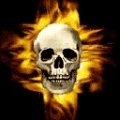EXTREMEZONE FORUM
WWW.EXTREMEZONE.3XFORUM.RO - WWW.TORENTZ.3XFORUM.RO- WWW.PETARDEARTIFICII.CABANOVA.COM http://www.facebook.com/petardeartificiidevanzare
|
Lista Forumurilor Pe Tematici
|
EXTREMEZONE FORUM | Reguli | Inregistrare | Login
POZE EXTREMEZONE FORUM
Nu sunteti logat.
|
Nou pe simpatie:
Karlla pe Simpatie.ro
 | Femeie
22 ani
Timis
cauta Barbat
22 - 44 ani |
|
blackangel11
VIP
 Inregistrat: acum 15 ani
Postari: 2118
|
|
Virtual Chemistry Lab 2.0
You can perform virtual chemical reactions and see what the results would be. Virtual Chemistry Lab application was designed to help students in their first year of studying Chemistry and their teachers, as well.
Reactions are performed in several easy steps: the user picks a container and puts it on the virtual worktable and then adds two substances into the container. The assistant will announce the result – whether the reaction went normally or there was some kind of a problem. A problem can often arise, for example, if both substances are metals or a burner is required for the reaction and none has been put on the worktable or there is no information about the reaction in the database.
If there are no problems, the user can see the change and the result of the reaction in the container. The field under the assistant shows an equation of the reaction and sometimes a small animation showing how the atoms are grouped together. There is no limit to the number of containers that can be put on the worktable or the reactions to be performed. When the user has finished with the lab experiments, he can clean the worktable and start anew.
The program has a way to modify the information about elements and reactions and so enrich the database. The login in the administrative panel requires an example password to protect students from accidentally deleting parts of the database in schools. On the first run of the program, a teacher can change the example password as it is initially recorded in the help file.
A chemistry project without the periodic table of elements is nothing. That is why we have one here. There are two variants of the table – normal and unfolded. They differ in nothing except the location of the elements. To satisfy the students’ curiosity, I’ve included information about every element – physical attributes, history, interesting facts, a photo of the element and others.
Apart from the periodic table of the elements, there are also several other reference tools included – the solubility table, Oxidizing and Relative activity of some of the substances. When students first encounter with the chemical terminology, they find it hard to remember it without constantly using it. This will no longer be a problem as the program has a built-in glossary of the most widely used terminology. It’s a wonderful way to recollect the meaning of any unknown term at any time.
The students in the seventh grade learn about some of the most widely-spread elements, compounds and reactions but they also learn how to solve equations and different problems like the mass and so on. In this case they need to use different units and convert them. The project incorporates an extremely useful unit converter and it can convert all kinds of units. Another useful tool is the calculator which helps the students to calculate any sum they encounter with.
When conducting a laboratory experiments, students write down every important detail. This is why I created the lab log which does the writing down for the students. They can save the log about any experiment and review it afterwards.
The most interesting thing for some of the students and most of the teachers is the self-test feature of the program. There are several tests – the first is the standard one – several answers and only one of them is the right one. After the test is completed, a mark is generated depending on the number of the right answers. This is a good way for teachers to check their students’ knowledge. The questions in the test can be modified in the administrative panel. Another tool of examination is the equation editor.
It can help the teacher to check the students’ skills of solving chemical equations. The last but not least important method for examination is using simple lab experiments. A reaction is visualized onscreen and the student is asked a question regarding the reaction. Seeing the changes on the screen, the student has to consider what he sees and answer correctly.
In order to make the program more fun and pleasant to use, I’ve added the option to modify the colors and transparency attributes of some of the program’s elements. That way the students can change the appearance of the program to their own liking. Besides all that functionality, there is also a complete help system in the project. Should there be any problems (which I highly doubt) the user can always look for help in the help system.
chemistry lab
A virtual chemistry laboratory, which has a lot of extra features. The program has a myriad of functions and is indeed a useful tool for teachers as well as for students and for those who are interested in Chemistry. The program is very intuitive – there is a virtual worktable and two panels - for lab instruments and for substances respectively. To perform a reaction the user just has to put the necessary containers on the worktable and put the needed substances in them. The program has a database of reactions and it can visualize those, which are studied in the seventh grade. For example, if you fill a lab glass with water and put sodium in it, you will see an animation not only of how the reaction goes but how the molecules of the two substances interact to produce the final result of the chemical reaction. In general, the way experiments are conducted is very simple and reminds of actual lab work. The program also includes an assistant which notifies of all the changes within the program. The program offers plenty of tools including the periodic table, the solubility table, the oxidizing and relative activity table and even a glossary. Should those not suffice, there is an additional number of tools – an equation editor and a unit converter. There is also a self-test, a scientific calculator, lab exercises/tasks and a lab log (in order to prepare reports of the experiments
|
|
| pus acum 15 ani |
|
